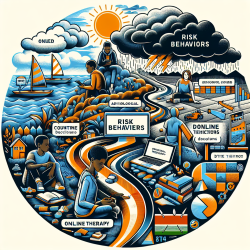Introduction
Adolescence is a critical period for the development of sexual and reproductive health behaviors. In Kenya, a recent study titled "The Occurrence of Sexual Risk Behaviors and Its Association With Psychological Well-Being Among Kenyan Adolescents" provides valuable insights into the patterns of sexual risk behaviors (SRB) and their association with psychological factors such as self-esteem and hopefulness. This blog post aims to explore the implications of these findings for practitioners and encourage further research in this area.
Key Findings from the Study
The study conducted a cross-sectional analysis among 296 adolescents aged 12–17 years from rural and urban settings in Kenya. Key findings include:
- 13% of participants experienced some form of SRB, with sexual violence, intergenerational, and transactional sex being the most common forms.
- Higher hopefulness scores were reported among adolescents who did not experience SRB.
- Depressive symptoms and feeling unsafe in the neighborhood were significantly associated with the occurrence of SRB.
- Self-esteem and hopefulness were not significantly associated with SRB in the adjusted analysis.
Implications for Practitioners
Practitioners working with adolescents can draw several implications from these findings:
- Integrate Mental Health Services: Given the association between depressive symptoms and SRB, integrating mental health screening and interventions into sexual health programs is crucial.
- Focus on Safety and Environment: Creating safe environments for adolescents, both at home and in the community, can help reduce SRB. Practitioners should advocate for policies that address neighborhood safety.
- Enhance Hopefulness: While not statistically significant in this study, hopefulness showed potential protective effects. Programs that build hope and future orientation could be beneficial.
Encouraging Further Research
The study highlights the need for further research to understand the complex interplay between psychological factors and SRB. Practitioners are encouraged to engage in or support research that explores these dynamics, particularly in different cultural and socioeconomic contexts.
Conclusion
The study provides critical insights into the sexual risk behaviors of Kenyan adolescents and their association with psychological well-being. By integrating these findings into practice, practitioners can better support adolescents in achieving positive health outcomes. For those interested in delving deeper into the research, the original paper can be accessed through this link: The Occurrence of Sexual Risk Behaviors and Its Association With Psychological Well-Being Among Kenyan Adolescents.










